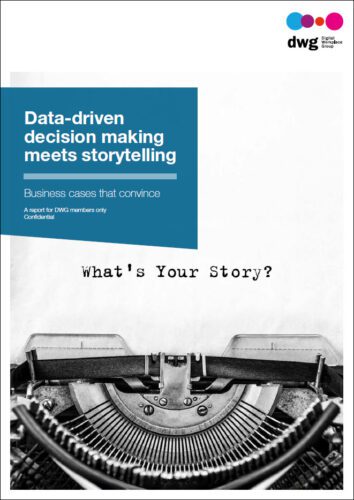How to put together a business case for digital transformation

Defining digital transformation
Digital transformation refers to the integration of digital technologies into all areas of an organization, fundamentally changing how work gets done, how employees collaborate and how value is delivered internally. It’s not just about adopting new tools; it’s about rethinking processes, culture and the daily experience for employees.
In the workplace, the meaning of digital transformation stretches beyond IT upgrades. It touches communication, collaboration, knowledge sharing and employee engagement – all designed to enable a more agile, connected and resilient organization.
The business case for digital transformation
In a world defined by constant change, digital transformation is no longer optional. It’s an essential step for organizations that want to remain competitive, resilient and attractive to top talent. But ambition alone isn’t enough to secure leadership buy-in and investment; you need a clear, compelling business case for digital transformation.
Here’s how to build one.
1. Define the strategic drivers
Start by clearly articulating why now is the right time for transformation. Link your digital goals to the organization’s broader strategic priorities, such as:
- remaining competitive in a fast-changing market
- increasing operational efficiency
- enabling flexible, hybrid working models
- enhancing employee experience and engagement
- building greater resilience against disruptions.
When digital transformation is positioned as essential to business success, not just an IT project, leadership attention follows.
Explore how digital workplace strategy can drive long-term business success
2. Outline the expected benefits
A strong digital transformation business case balances hard numbers with human impact.
Quantitative benefits might include:
- cost savings from reduced real estate needs
- efficiency gains through automation and smarter workflows
- lower IT maintenance costs thanks to cloud solutions.
Qualitative benefits are equally powerful:
- higher employee satisfaction and retention
- improved brand reputation as a modern, forward-thinking employer
- faster innovation cycles and greater organizational agility.
Tying benefits back to measurable business outcomes makes the case even stronger.
3. Estimate the costs
Leaders need a clear view of the investment required. A credible estimate includes:
- one-off costs: technology licences, consulting services, training programmes, change management initiatives
- ongoing costs: platform subscriptions, digital workplace support teams, continuous improvement programmes.
Transparency builds trust and prepares the organization for long-term success.
4. Identify the risks and mitigations
Every major change carries risks – but anticipating and addressing them upfront shows strong leadership. Potential risks might include:
- resistance to change from employees or leaders
- complexities in integrating legacy systems
- cybersecurity vulnerabilities from increased remote access.
Mitigation strategies, such as strong change management programmes and enhanced security frameworks, reassure decision-makers.
5. Create a roadmap and milestones
Show leaders that success won’t happen overnight – but it will be staged, measured and celebrated. A transformation roadmap outlines:
- key phases of the project
- major milestones and go/no-go points
- metrics for tracking progress (e.g. adoption rates, engagement scores, business performance indicators).
This reassures stakeholders that investment will lead to visible, trackable outcomes.
Conclusion
Building a business case for digital transformation is about demonstrating that it’s an investment, not an expense. It’s a strategic move that positions organizations to thrive today and lead tomorrow.
Ready to craft a business case that gets results?
For more digital workplace resources, DWG members have full access to exclusive articles, events, peer insights and a Research Library of 100+ reports covering key areas such as digital workplace transformation, digital employee experience, AI readiness, strategy and governance, change management and more. Contact us to learn how to gain access to this library via DWG membership.
Categorised in: Digital workplace transformation

